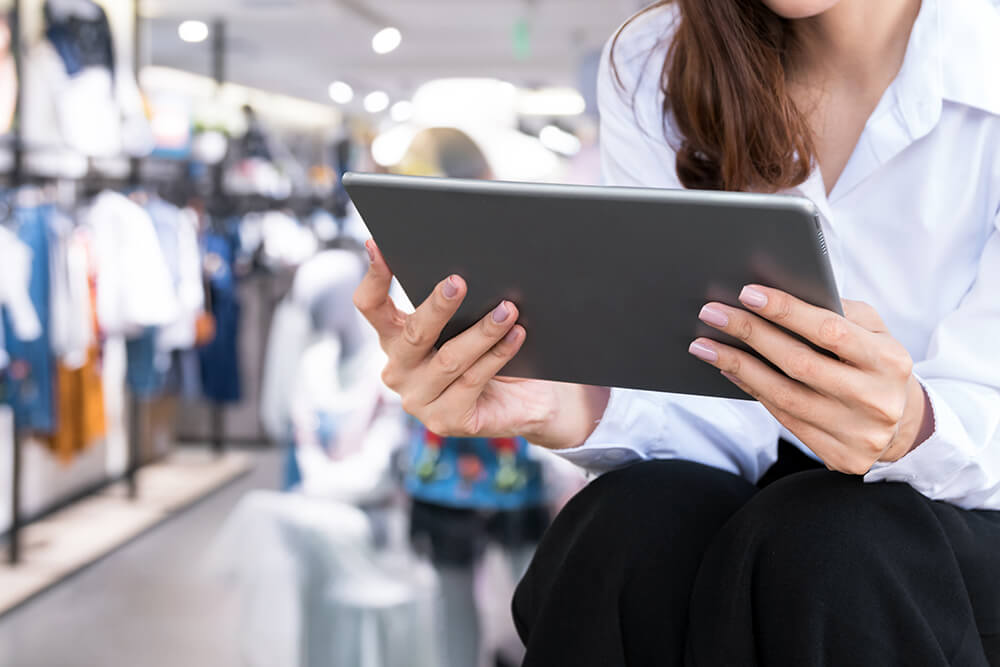Five ways to better engage customers in-store

In the current retail landscape, every customer who walks into a store counts.
The tough conditions of 2020 mean retailers can no longer kick back, allowing shoppers to peruse the wares while simply hoping they might make a purchase.
Instead, the modern bricks and mortar environment is all about customer engagement, where decreased foot traffic has to be countered by better service, a better experience, and by focusing on the unique strengths that only real-world retail can offer.
Here are five ways retailers can better engage with their customers in-store to maximise their sales conversion.
Playing to their strengths
If a consumer has taken the time to enter a retail outlet, chances are they are seeking one of four things that only real-world retail can provide.
These include:
- The ability to touch and feel a product
- An immersive experience
- Sales expertise and product knowledge
- The opportunity to purchase and possess an item then and there
Each of these four factors rely on engaging the customer in-store, so here are five ways to improve that interaction and play to the strength of physical retail.
Interactive displays
The ability to touch, feel, and interact with a product remains the prime advantage that real-world retail has over the online realm.
And regardless of whether the product is clothing, electronics, toys, or cosmetics, this remains one of the major reasons that a shopper will make the effort to attend a bricks and mortar store.
When they touch, feel, and interact with a product, consumers gain a better insight into the product’s dimensions, fit, look, colour, use cases and so much more.
Whether it’s a mannequin wearing the latest clothing range, or an electronics display where the customer can try out the latest smart phone, tablet, laptop or smart speaker, interactive displays which allow the customer to envisage themselves in possession of a product are the prime tool in tapping into this strength.
Recommended tools:
Digital displays
In a similar yet slightly different vein, digital displays also increase a customer’s emotional connection with a product.
Whether the display offers further information about the product or showcases how it can be used in the real-world setting, these displays support the customer’s purchasing decision, while also gaining valuable data.
This data ranges from how often customers interacted with the display to what information piqued their interest, allowing retailers to better tailor their offering for further engagement and sales.
Recommended tools:
mPOS
Mobile Point of Sale allows the retailer to cut the queue and take the register to the consumer, increasing the engagement between sales associates and the customer.
In the interim, modern mPOS also facilitates staff knowledge of products and trends, with information at their fingertips, courtesy of a mobile device. In addition, it facilitates a customer’s desire to purchase a product then and there.
Recommended tools:
Personalisation
As research company McKinsey noted earlier this year, personalisation is now a key factor that all consumers expect from the retail experience, but how does this look in-store?
Well, one way is through the use of retail apps where retailers target shoppers with push notifications of specials that are tailored to them as they walk past a store.
McKinsey touts a large European grocer as one great example, along with cosmetics retailer Sephora.
They explain the grocer routes discount offers to specific segments of their clientele via the grocer’s smartphone app as they walk past the store.
Meanwhile, Sephora has an in-app feature called “in-store companion”.
“When customers choose to have their makeup done in stores, they receive a log-in for the app so that the makeup artist can input each product she or he used into the customer’s personal profile,” McKinsey explains.
“The app also allows customers to virtually try on products and to receive recommendations based on their personal beauty traits.
“When customers visit a Sephora store, they can use the app to find the products they have virtually sampled.”
A retail experience
Ultimately customer engagement is about offering a retail experience, and many of the tools outlined above are designed to enhance this interaction in-store.
Some retailers are also looking to take this further, offering experiences like events, with the recent opening of the Rebel RCX store in Western Sydney a prime example.
In October, the store opened to much fanfare as it unveiled customisation zone where shoppers could design their own graphics for their t-shirts an indoor soccer zone, ‘Home of Basketball’, and e-gaming.
All these strategies are designed to offer an experience that goes far beyond the retail environment, allowing the customer to immerse themselves in a store and its ethos.
“Customers are yearning for great experiences and it’s our responsibility to bring it to them,” noted retail strategist Danny Lattouf of The General Store, who helped bring the Rebel concept to life.
“Whilst convenience has risen to an even higher degree of importance in recent times, we must pair that with differentiated experiences that provide a real value exchange for people’s time, energy and attention – enter Rebel RCX.”
For further information on how the retail landscape is changing, see here.